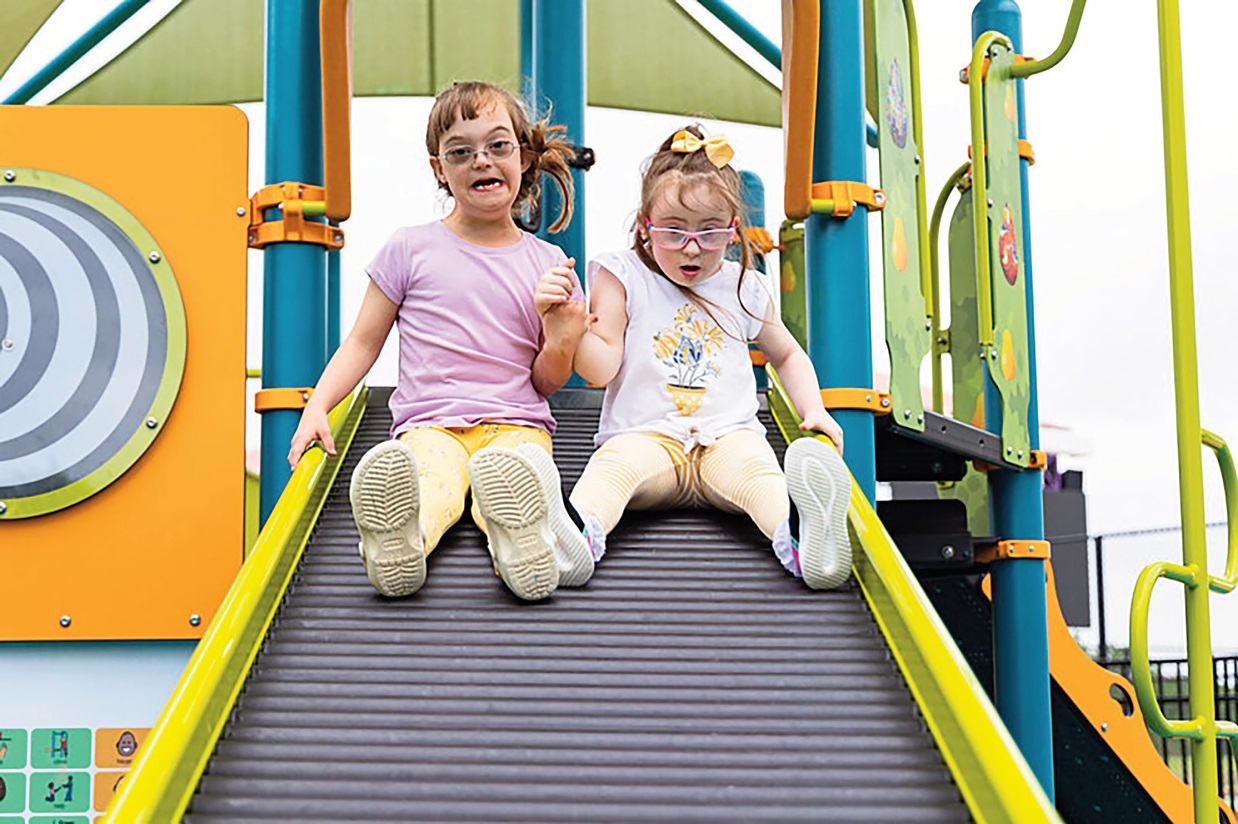
ON A ROLL: (Above) Two young girls holding hands take a ride down the Rollerslide, which delivers a cool, sensory experience to kids of all abilities; (Opposite page) A young boy points to a picture on the Symbol Communication Sign, which allows individuals who are nonverbal or early learning to communicate with friends and caregivers.
RETHINKING INCLUSIVE PLAY
The Americans With Disabilities Act (ADA) is often seen as the driving force behind making spaces more accessible. However, the focus when designing a playground tends to be on including access for those with mobility disabilities.
According to the National Center for Education Statistics, the number of students ages 3 to 21 who received special education services under the Individuals with Disabilities Education Act (IDEA) was 15% of all public-school students. And of that 15%, only 1% is attributed to orthopedic disabilities. If a playground is only focused on orthopedic disabilities, it may not address the needs of people with other disabilities, such as vision and hearing.
Certainly, many communities and schools do try to address the needs of disabled groups in play spaces. But too often, the intent is greater than the impact. A good
example is when braille signs are used in a playground. It's a thoughtful step. But today, due to a shortage of braille teachers and an increase in assistive technology, only about 1 in 10 blind children are literate in braille.
Fortunately, the focus on inclusive play today is more holistic and intentional. Now, kids with vision or hearing disabilities have spaces where they can not only play, but also feel comfortable accessing, getting oriented and moving around in.
WHAT'S CHANGING
Modern, more inclusive playgrounds accommodate kids with vision and hearing disabilities in many ways.
If you have a child who is blind or has low vision, for instance, you may notice greater use of color and contrast at play
grounds. This can help children better perceive and differentiate playground features.
Steps on the playground may use color cues. This can help kids spot changes in elevation and know how far they need to climb. A balance beam may contrast in color with the ground below. This can inspire a kid with limited depth perception to see it and walk it. And solid or tightly perforated surfaces like the deck of a playground structure can help a low-vision child more easily identify it as walkable than surfaces with large perforation.
Subtle additions can also help blind and low-vision kids better orient themselves on play spaces. Tactile maps can help them mentally map the area. Sound elements like musical play panels or outdoor musical instruments help alert users to where they are. And elements like colored walkways, ground texture changes and guide ropes can help them get around.